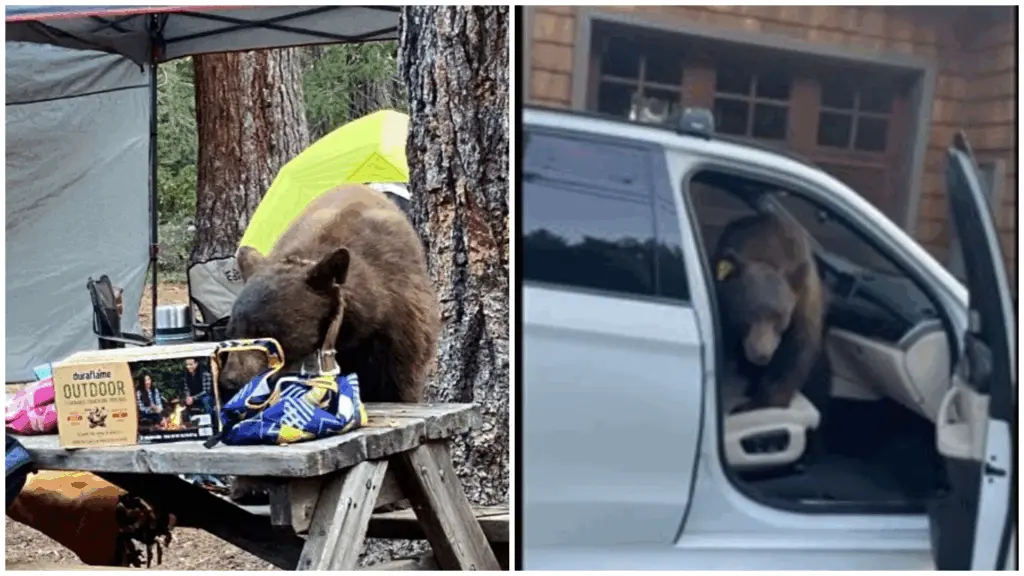SOUTH LAKE TAHOE, CA – The California Department of Fish and Wildlife (CDFW) has euthanized a well-known conflict bear in the Lake Tahoe Basin after years of escalating human-wildlife encounters, including home break-ins, vehicle damage, and threatening behavior toward campers.
The bear, identified by ear tag number 717, was lethally removed on July 7 after being discovered inside a damaged, unoccupied home near Meeks Bay. According to CDFW, the bear had a documented history of break-ins and human conflict dating back to at least 2021. Despite previous efforts to haze, relocate, and deter the animal, its behavior persisted and intensified.
CDFW officials were stationed in the area that evening to help haze multiple bears from campgrounds in an effort to protect campers and prevent food conditioning. During the operation, they were alerted to the home break-in and identified the bear by its tag.
Bear 717 had been previously captured and relocated but returned to the Tahoe Basin and continued its destructive behavior, including breaking into vehicles and businesses and aggressively approaching campers to access food. The bear became “trap shy,” making it difficult to recapture, and was ultimately approved for lethal removal due to ongoing threats to public safety.
CDFW reported the bear weighed nearly 400 pounds and suffered from severely decayed teeth, likely a result of its reliance on human food and garbage. After collection of the skull for scientific and educational use, the bear’s remains were returned to the forest to decompose naturally and later moved to avoid public encounters.
Officials emphasized the importance of keeping bears wild by eliminating attractants such as unsecured trash and food. CDFW’s updated Black Bear Conservation and Management Plan continues to prioritize nonlethal conflict prevention but allows for lethal actions when public safety is at risk.
The agency encourages the public to report bear sightings or conflicts through their Wildlife Incident Reporting system and to follow BearWise practices to reduce bear-human interactions.
